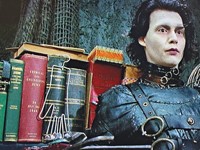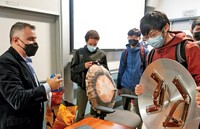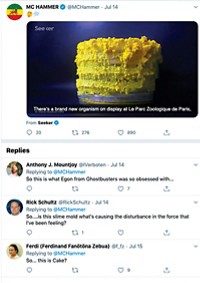Advertisement
Grab your lab coat. Let's get started
Welcome!
Welcome!
Create an account below to get 6 C&EN articles per month, receive newsletters and more - all free.
It seems this is your first time logging in online. Please enter the following information to continue.
As an ACS member you automatically get access to this site. All we need is few more details to create your reading experience.
Not you? Sign in with a different account.
Not you? Sign in with a different account.
ERROR 1
ERROR 1
ERROR 2
ERROR 2
ERROR 2
ERROR 2
ERROR 2
Password and Confirm password must match.
If you have an ACS member number, please enter it here so we can link this account to your membership. (optional)
ERROR 2
ACS values your privacy. By submitting your information, you are gaining access to C&EN and subscribing to our weekly newsletter. We use the information you provide to make your reading experience better, and we will never sell your data to third party members.
Education
Newscripts
Creating Chemistry Creatures, Irresponsible Science For Kids
by Andrea Widener
August 24, 2015
| A version of this story appeared in
Volume 93, Issue 33

Helium wears light blue butterfly wings. Carbon dioxide dons a bright red fireman’s hat. Methane sports horns, black spots, and a tail.
These are just a few of the molecules personified in new educational materials available from a company cofounded by chemists called Scinch. The educational materials aim to make chemistry more relatable for kids.
“We present the content with characters and make everything stories,” explains Jackie Rankin, Scinch’s president and lead artist. “We want to get away from this idea that science is just pages of text you have to read.”
The company’s main products are experiment kits. Kits available now are either too complicated for young kids or miss the science completely, Rankin tells Newscripts. “This amazing thing happens, but we’re not going to tell you why,” she explains. The company’s first kit teaches about gases and pressure, while the second (due out in December) will focus on acids and bases.
Scinch’s kits feature the element creatures, which Rankin designs herself (she’s up to argon). That’s also true of the company’s other products, like chemistry playing cards.
Rankin wrote a book about Harry the Hydrogen’s trip into space and was thrilled when she learned some kids love it so much they sleep with it under their pillow. Scinch also offers knitted element characters—handmade by fellow founder Jen Esbenshade—that might be better bedtime companions.
So far, Rankin hasn’t gotten any flak from her fellow chemists for giving personalities to elements, though she knows there are probably skeptics out there. But who could hate a friendly methane cow?
Irresponsible science is another subject that could definitely draw the ire of researchers everywhere. But that’s not what drew author Sean Connolly to create “The Totally Irresponsible Science Kit.”

“It’s not really irresponsible in the sense that it’s not dangerous,” Connolly says. It’s more something that parents might not like. “You could make a mess; you could get into trouble.” Kids love it when they think they are getting away with something, he explains.
Connolly isn’t a scientist. But growing up in Boston, he took a Saturday morning class for kids at Massachusetts Institute of Technology that helped demystify science and made him a lifelong fan. He’s written several other science books for the public, including “The Book of Potentially Catastrophic Science” and “The Book of Perfectly Perilous Math.”
When writing for the public, it sometimes helps to come from a nonexpert’s point of view, Connolly says. “I like to think I have a foot in both camps.”
That’s the approach he takes with the irresponsible science kit, which comes complete with kitschy 1950s-inspired art of an evil scientist on its cover. Along with an experimental step-by-step, each description includes a “scientific excuse” that explains the experiment’s underlying science. “I was trying to get to the science through the back door,” he says.
Kids love defying authority, and they are also ecstatic when Connolly does. He was demonstrating the potato gun experiment at a Utah school, and it turned out to be more powerful than he thought. The potato shot all the way across the room and hit a painting of George Washington square in the face.
The kids laughed. Connolly recalls that he wasn’t so sure it was funny. “I had this horrible feeling I was going to get detention.”
Andrea Widener wrote this week’s column. Please send comments and suggestions to newscripts@acs.org.





Join the conversation
Contact the reporter
Submit a Letter to the Editor for publication
Engage with us on Twitter